 | E-mail to Birds Korea |
 | KWBS |
in the Region
 | The Oriental Bird Club |
 | BirdLife International (Asia) |
March
March often contains a mixture of dry, cold days (with night temperatures down to 3-4 C, and highs between 10 and 15 C) and occasional milder showery, windy weather.
Most wintering species are still present, but in progressively reduced numbers. Falcated Duck regularly display on reservoirs and ponds, while small numbers of Baikal Teal remain at key sites. Migrant cranes peak in the northwest, as can the Ancient Murrelet migration along the east coast. Small numbers of shorebirds, including early Little Ringed Plover and flocks of Far Eastern Curlew arrive, plus Siberian Buff-bellied Pipits and the first leucopsis White Wagtails. Hundreds of Rustic Buntings, Dusky and Naumann’s Thrushes move north-east out of China and Japan, along with smaller numbers of raptors and occasional influxes of Japanese Waxwing. Bramblings and Siskins often form large flocks at key migration points. Sunny days tempt Rustic, Meadow, and Yellow-throated Buntings into song, and numbers of Oriental Stork, while still very small, peak at Seosan.
Rare finds in March in recent years have included Red-crested Pochard, Yellow-bellied Tit, and Red-throated Thrush. Careful searching through gull flocks may reveal taxa like Pallas’s Gull, barabensis, cachinanns, or smithsonianus. National firsts in March include Bar-headed Goose in 2003, European Robin on Hong Island in 2006, and Bonelli’s Eagle on Ui Island in 2007.
(The following records are a compilation of our own sightings and records sent in by other observers. As well as being posted on the Birds Korea website(s), selected records are also forwarded to other Korean-language birding websites; records of threatened species are arranged and forwarded to Birdlife International and national authorities when appropriate; flag images and records are passed to bodies responsible for their coordination throughout the flyway; and all records sent to us are used to compile annual reports and to support the evolving understanding of the status of many of Korea’s birds.)
Aphae Island, March 31
The tide was not very high, so most birds stayed more distant. The number of Bar-tailed Godwit had increased to c. 450, several with legflags (details see: http://www.birdskorea.org/Habitats/Wetlands/Aphaedo/BK-HA-Aphaedo-Flagrecords.shtml). Eurasian Curlew were 42, Eurasian Oystercatcher 43, Dunlin c. 3000, Great Knot 80+ and a few Grey Plover. The 3 Eurasian Spoonbills which were seen the day before were not found. Most interesting a leg-flagged Bar-tailed Godwit from New Zealand which - based on the information from the bander - was banded in 2006 at Motueka Sandspit, South Island New Zealand with an age of 3+ years and had since then only been seen two times in 2008 at the banding site in New Zealand.
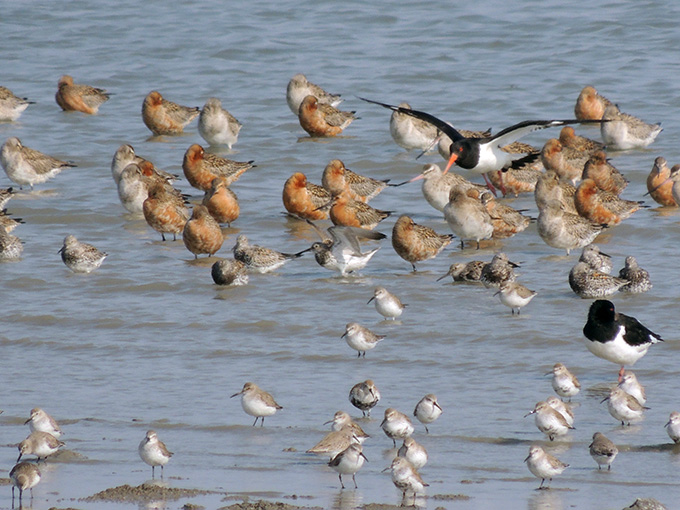
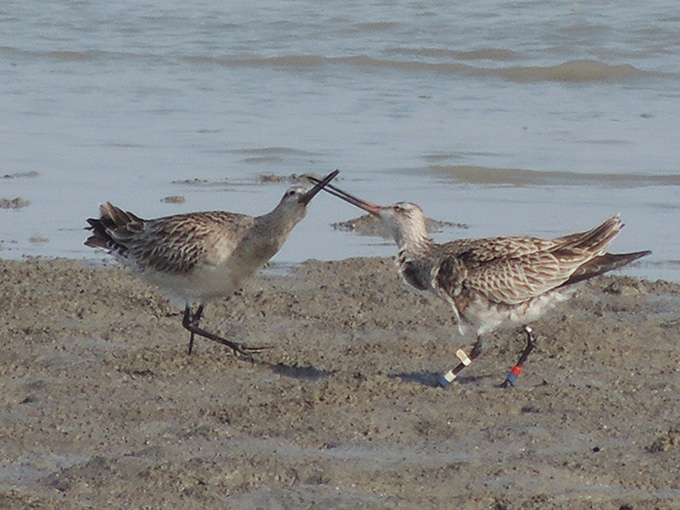
Songdo, March 25
After a fly-by Oriental Stork at lunch on Saturday, I visited the Sorae mudflats at a pretty low high tide in the afternoon with Minseon Kim, Kwanmok Kim, Youngmin Kim (yes, a lot of Kims!) and Jonathan Green, visiting from Princeton University.
With the wintering Eurasian Curlew (400), Dunlin (600) and Grey Plover (50) were 35 Bar-tailed Godwits, mostly in orangey breeding plumage, 4 Great Knots and one Whimbrel. A couple of dogs put up the curlew flock revealing several Far Eastern Curlew. Apart from the Little Ringed Plovers, the first of which arrived two weeks ago and Kentish Plover, of which about 50 were running around the mudflats at Ahm-do last week, these were the first real shorebird migrants of the spring. In addition, Jonathan and the Kims had seen 20 Red-necked Stints earlier in the day at Ganghwa.
At Namdong Reservoir, scanning for Spoonbills was interrupted by 99 White-naped Cranes migrating over in a westerly direction in two flocks. Nine Black-faced Spoonbills were sleeping and preening on a small reed island, occasionally venturing out to feed. The first Spoonbills apparently arrived back on March 12th, a record early date. About 20 Grey Herons were also present. The usual duck were around, although numbers of Common Pochard were much lower.
On the newly reclaimed land by the university, a redhead Common Merganser was on the pools, 50 White Wagtails were on a drained pond (mostly leucopsis but some ocularis), while Eurasian Skylarks sang overhead. Eastern Oystercatchers were back on the reclamation, with Little Ringed Plovers, while about 100 Oystercatchers were on the mud, now rapidly being filled in.
Aphae Island, March 25
The afternoon visit to the tidal-flats of Aphae showed no birds on the northern tidal-flat; very strong wind and waves from the sea-side had pushed all birds of the site.
The southern tital-flat filled more and more with the incoming tide. The birds were mostly within two flocks, one c. 800 Dunlin and a mixed flock of 92 Bar-tailed Godwit, one with a white leg-flag, 29 Great Knot and c. 40 Eurasian Curlew. About 30 more Curlews were feeding on the mud. A Common Kestrel flew over and while the "bigger" birds kept calm, all Dunlin flew off and the Kestrel unsuccessfully chaised the flock for a short while. More birds came in which were in detail 29 Grey Plover, 2 Common Redshank and 239 Eurasian Oystercatcher.
On the water a few Eurasian Wigeon and Black-tailed Gull.
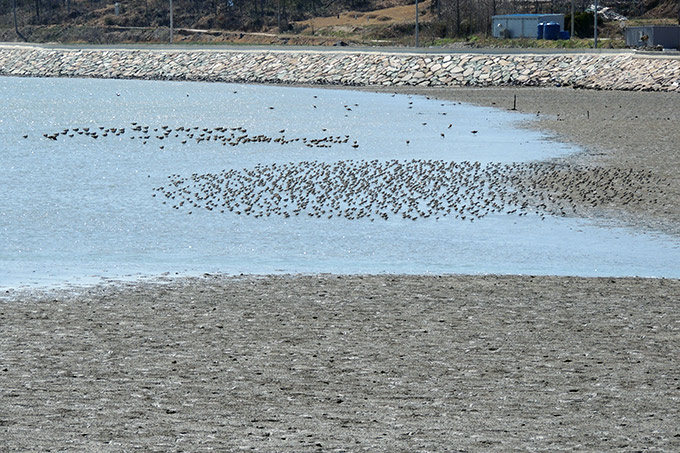
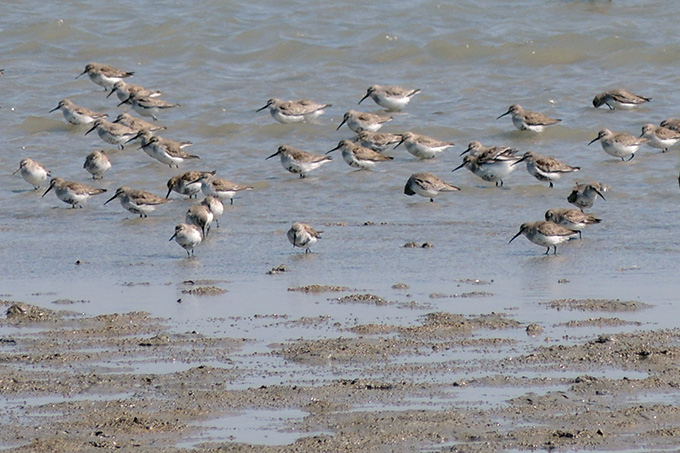
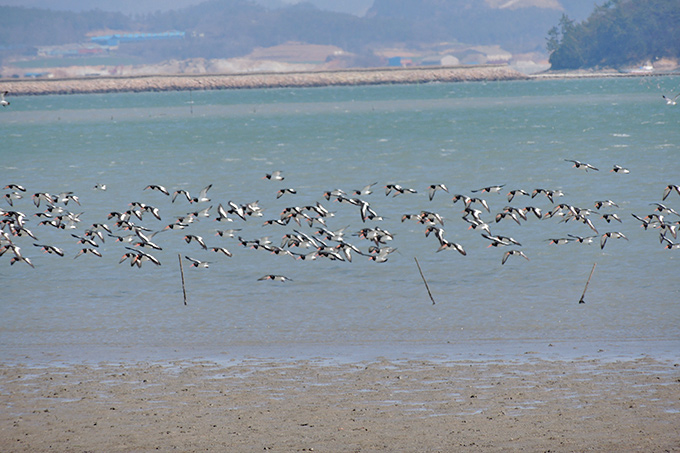
Yeongjong-do and Seoul, March 24
At Yeongjong-do, I looked around the south-western mudflat and farm areas. There were just a few winter visitors left, but I observed one Relict Gull in 2nd winter plumage, and 3 early visiting Far Eastern Curlew, in addition to several Vega Gull and lots of Kentish Plover.
I could see more people than birds at Gangseo Eco Park. I expected a small number of waterfowl at this time of season, but there were some 500+ at the small region in front of the birding deck. Most of them were Pochard, Tufted Duck, and Mallard with a few Greater Scaup, Northern Shoveler, and Eurasian Wigeon. And the most of the amazing, 1 Barn Swallow observed.
It was late when we arrived at Seonreung, and the light was poor for birding. I could see just a few numbers of Eurasian Siskin, Goldcrest, familiar tit species (Eastern Great Tit, Marsh Tit, and Coal Tit) and a steady finding of our last winter, 1 Chinese Nuthatch with 2 Eurasian Nuthatch.
Dajeo Eco Park, March 19
It was a hazy afternoon, with a strong breeze and a high of 17 °C. With three hours until sunset (6:34pm), I spent my time near the reed beds of the most upstream portion of the park. Birds seen include Pallas’s Reed Bunting, Common Reed Bunting, Meadow Bunting, 50-100 Buff-bellied Pipit, Dusky Thrush (23 in one flock; a few in flight at dusk, calling), 2 Japanese Quail, 2 Great Spotted Woodpecker and 1 White-backed Woodpecker, many Eastern Great Tit, many Tree Sparrow, and hundreds of Vinous-throated Parrotbills. Waterfowl include Eurasian Teal, Northern Shoveler, Gadwall, Eurasian Wigeon, Coot, Eastern Spot-billed, and Mallard. By sunset, many birds had taken flight and the reeds were quiet. The only birds to heard were geese and teal flying overhead.
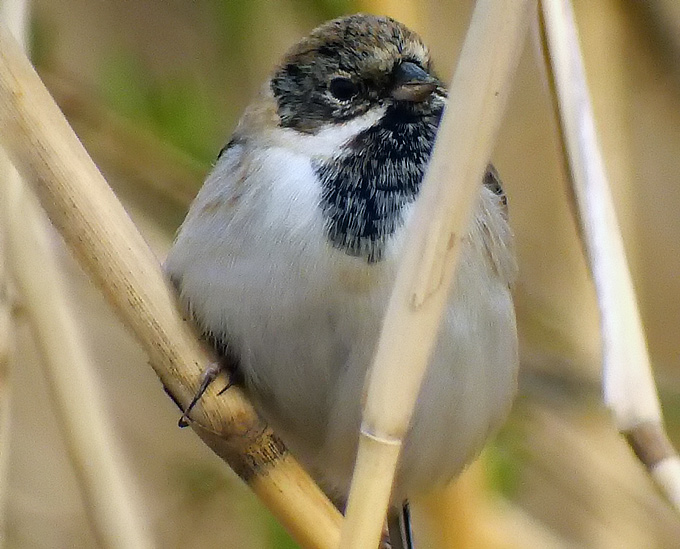
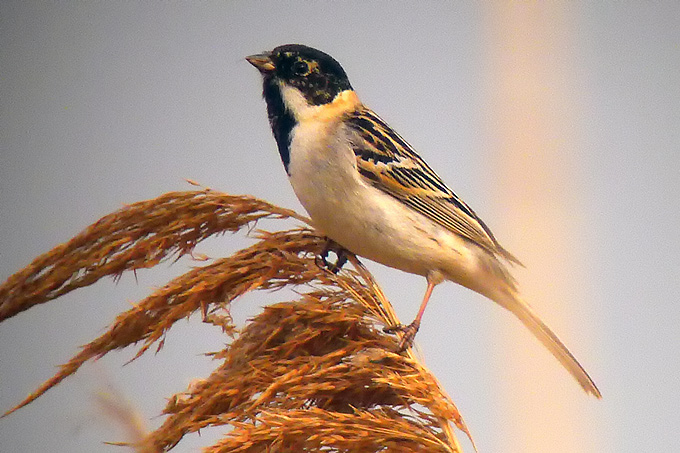
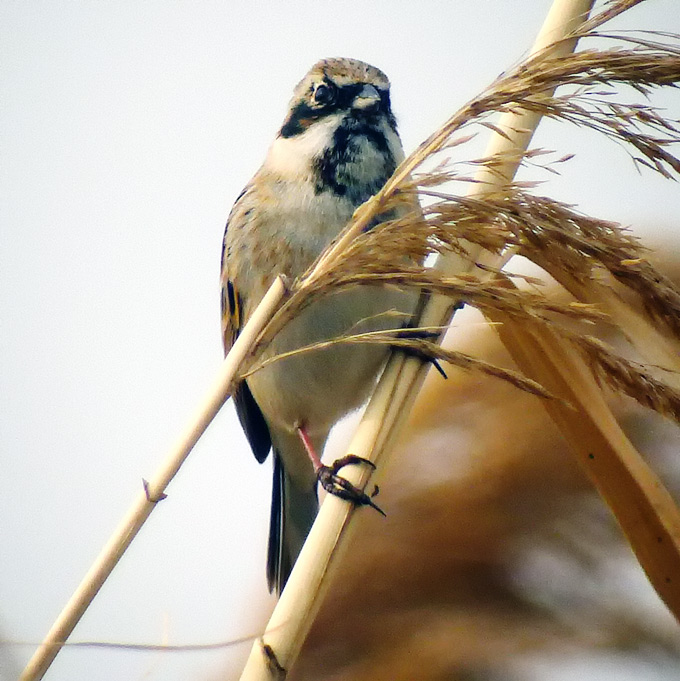
Yeaongsan barrage Mokpo, Okam-dong, March 11
In the morning when the tide was filling the stream 22 Gadwall, 6 Eastern Spot-billed Duck and one Little Egret were already in a pool. Later 2 Great Crested Grebe also came into the strem, while 14 more were outside the strem near the Yeongsan barrage like the day before. Also seen were 4 Mallard, one Little Grebe and one very active Black-necked Grebe. Quite amazing birding for a stream along an apartment zone and elementary school.
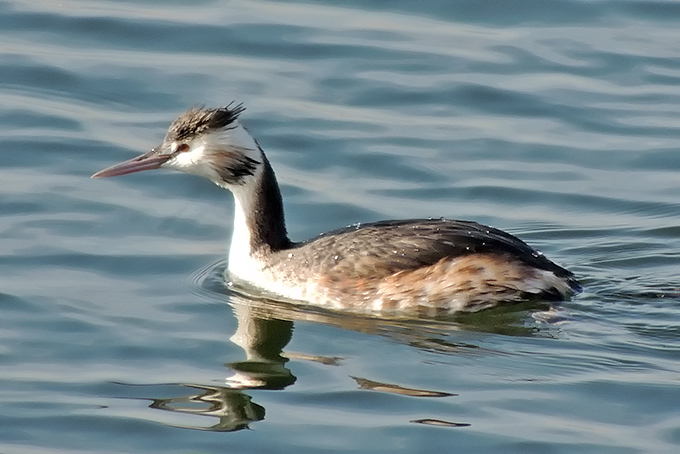
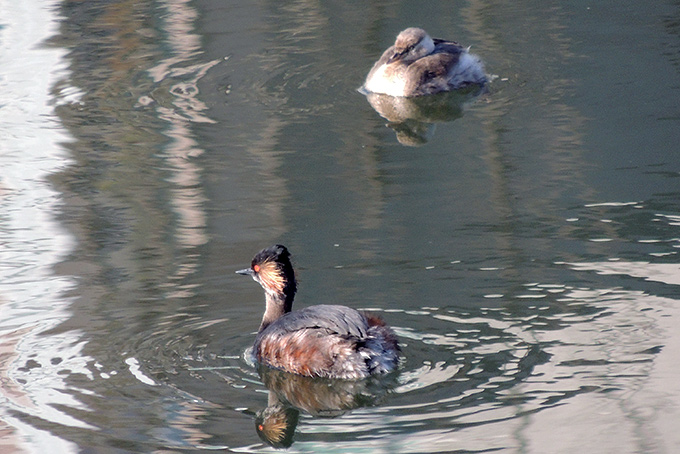

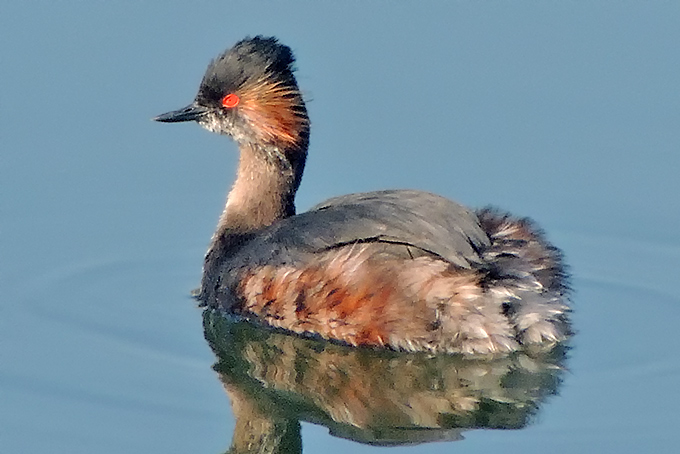
Andong, March 10
Conditions were Spring-like with a clear sky, a moderate breeze in the morning, and a temperature reaching 18 °C. Our first stop was a location of previously recorded Scaly-sided Merganser. Instead of finding Scalies in their natural habitat, we found river banks being destroyed and turned into a construction site. It’s always devastating to see this kind of loss. The only birds to be seen here were a few Japanese Wagtail.
Moving on, we visited near Imha Dam, where we found a pair of loafing Scaly-sided Mergansers. This type of habitat is atypical for the species. We also found Common Merganser, an Arctic Loon (NM & HJM), Mandarin Duck, Smew, Mallard, and Spot-billed Duck. Raptors seen include White-tailed Eagle and Eurasian Sparrowhawk.
We were able to get great views of a few Eurasian Bullfinches (rosacea), Naumann’s Thrush, and Dusky Thrush. Grey-capped Greenfinches were numerous and actively singing. Siskins, Bramblings, Long-tailed Tit, Eastern Great Tit, and Marsh Tit were foraging in a patch of tall pine trees. And then the morning quickly took an exciting turn when we heard what sounded very much like a Chinese Nuthatch. Seconds later, a remarkable find (first by Dr. Moores), a Yellow-bellied Tit (+1).
Other birds include Long-tailed Rosefinch, Pallas’s Rosefinch, Hawfinch, Grey-headed Woodpecker, Great Spotted Woodpecker, and Siberian Accentor.
In the afternoon, at the national forest museum, we were able to observe another interesting find, an adult male griseiventris Eurasian Bullfinch, foraging with three other males and a female (rosacea). Hoping for more, we explored the park thoroughly. Unfortunately, the rest of the park turned out to be rather quiet, bird-wise. There were two raptors, a Northern Goshawk and an Eastern Buzzard, a few Pallas’s Rosefinch, some Brambling, Siskin, Goldcrest, Coal Tit, Varied Tit, Japanese Pygmy Woodpecker, but all in low numbers.
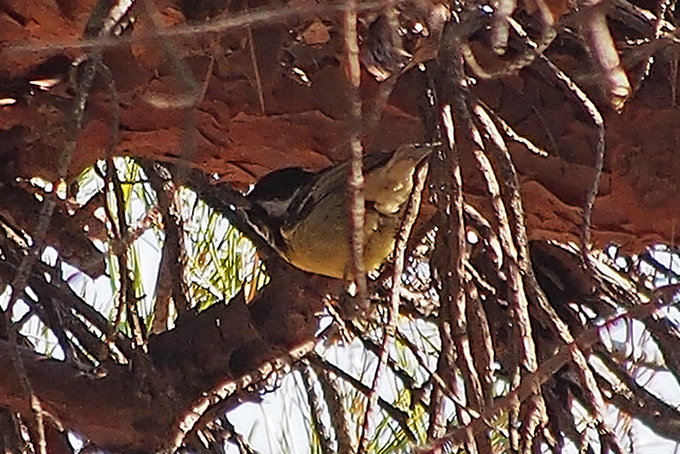
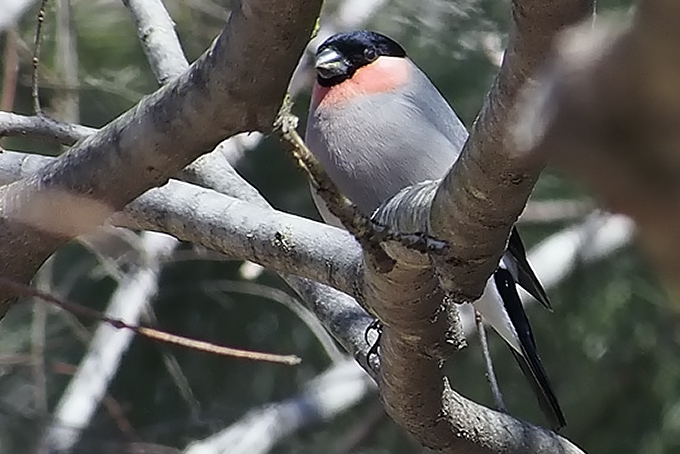
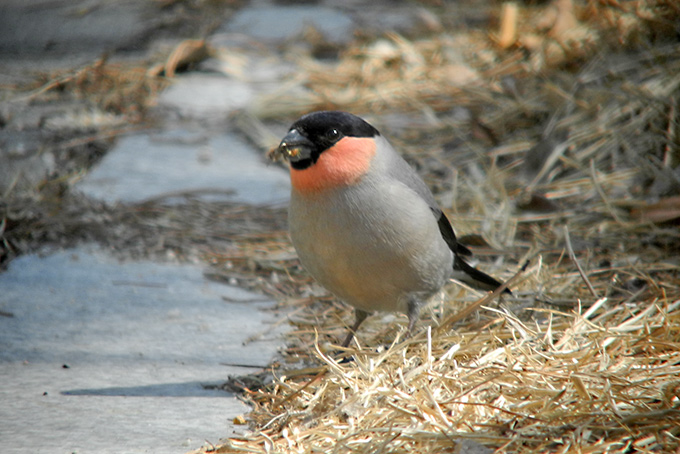
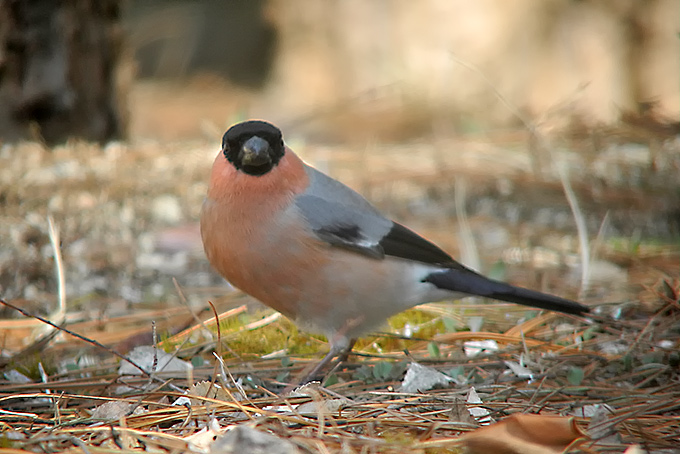
Yeaongsan barrage Mokpo, March 10
At the seaside corner of Mokpo's part of the Yeongsan barrage a small flock of in total 22 Great Crested Grebe were seen with most floating in roosting position close to the waterfront and some diving for food.
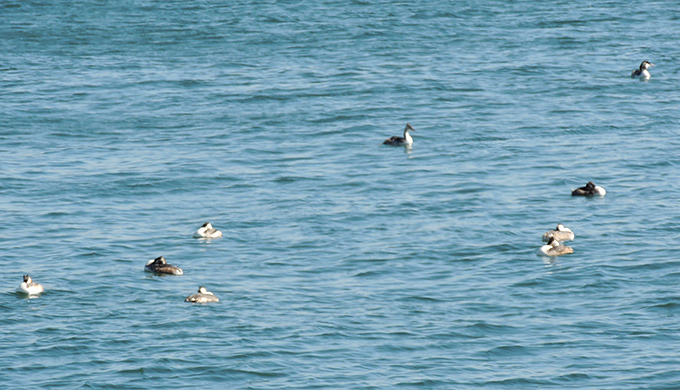
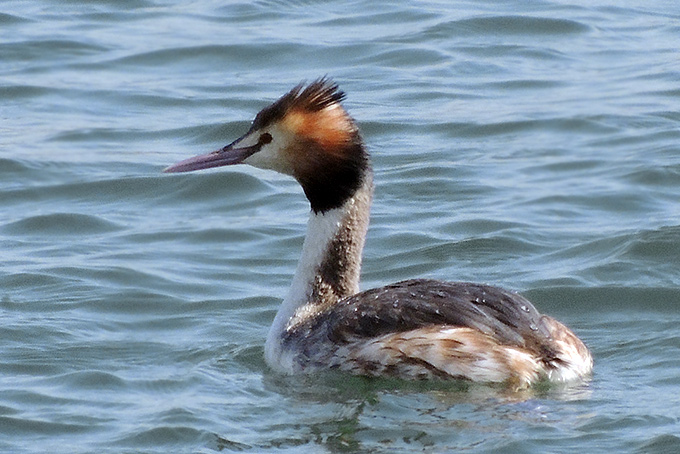
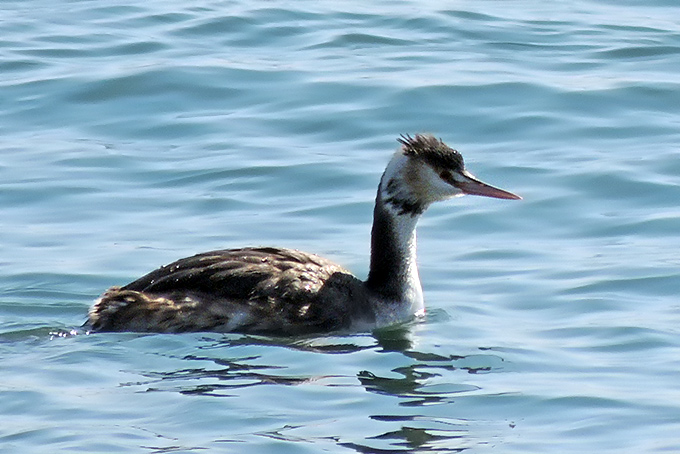
Guryongpo, March 9
On Saturday morning the wind was strong, and there seemed to be high traces of dust in the sky. Still it was a great day to be outside with a high (record) temperature of 18 C in the afternoon. Our plan was to “gull” the coast. There was a recent report of a barrovianus-type Glaucous Gull as well as the Iceland Gull that I missed three weeks before, so both became our target species for the day. Before arriving at Pohang, just outside of Gyeongju, I spotted a large flock of about 100+ Rook, which included 3 Daurian Jackdaw.
After meeting up, we visited the harbor. Mostly present were Black-tailed Gull, with some Vega and Mongolian, far fewer gulls than on the 16th.
Not seeing much, we decided to move on. Several flocks were roosting on the undisturbed portions of the rocky coastline. There were also hundreds of gulls offshore, but most were too distant to be identified and obscured by a heavy fog. There were some Taimyr Gull; a few being very interesting (see image below), Slaty-backed, Black-headed, Mew (Common) Gull, but again mostly Black-tailed Gull, with some Vega, and Mongolian.
Although we searched high and low, we were unable to find any Iceland. But we found 15 Glaucous Gulls. Almost all were pallidissimus, save one gull, fitting many of the criteria found in a barrovianus; smaller sized than pallidissimus, a shorter smaller bill, broad dark tip, short primary projection, dark markings still visible on the breast, yet having very pale eyes. An image is posted below.
Other species observed include Sanderling, Brant (same as on Feb. 16), Harlequin Duck, Arctic Loon, Red-throated Loon, Black-necked Grebe, Great Crested Grebe, Rhinoceros Auklet, stunning views of an Ancient Murrelet, Great Cormorant, and Red-breasted Merganser.
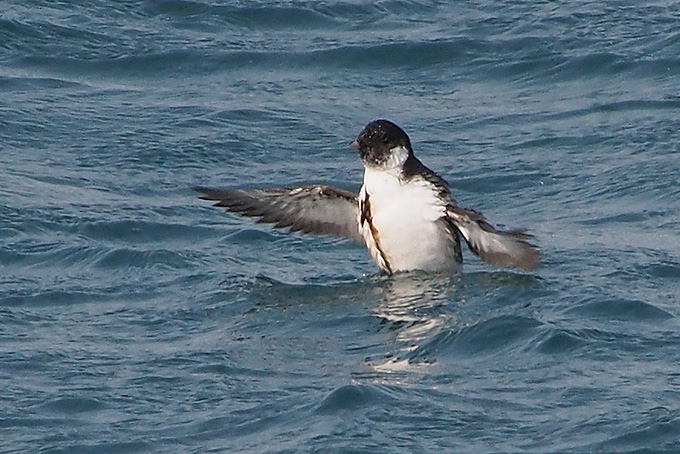
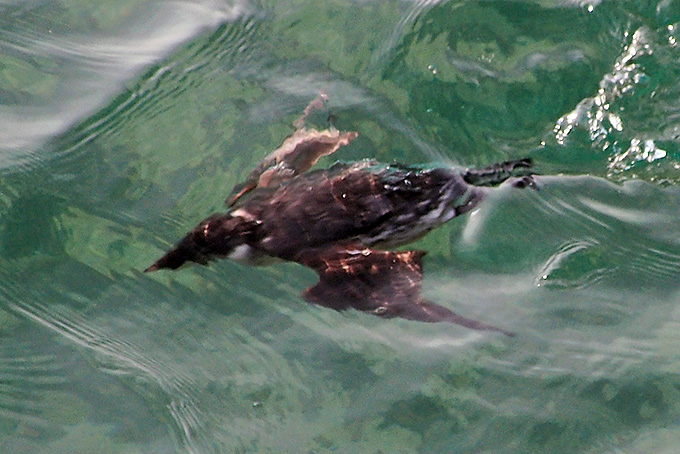
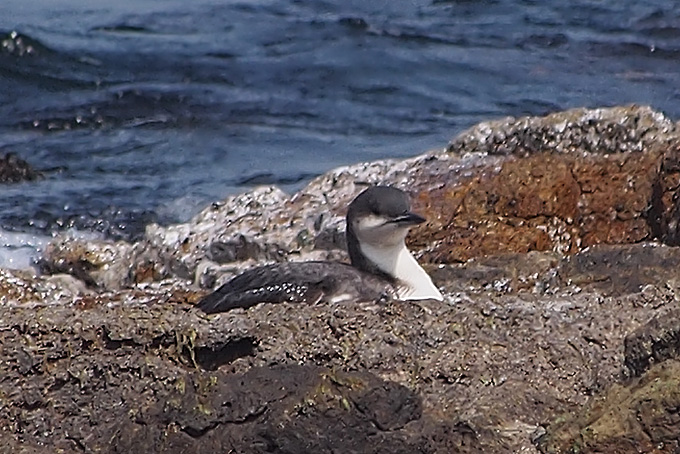
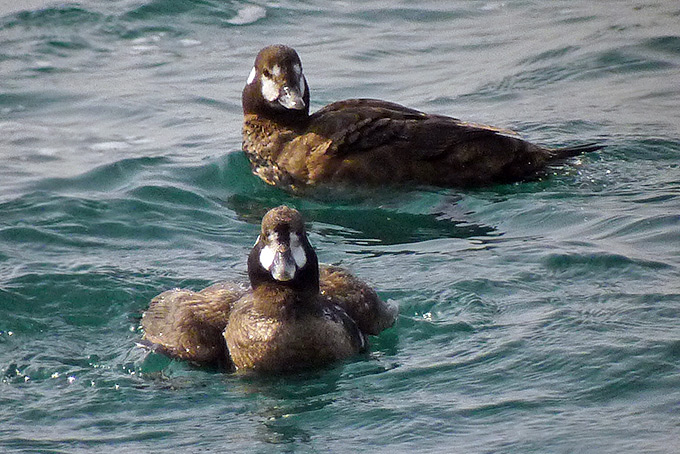
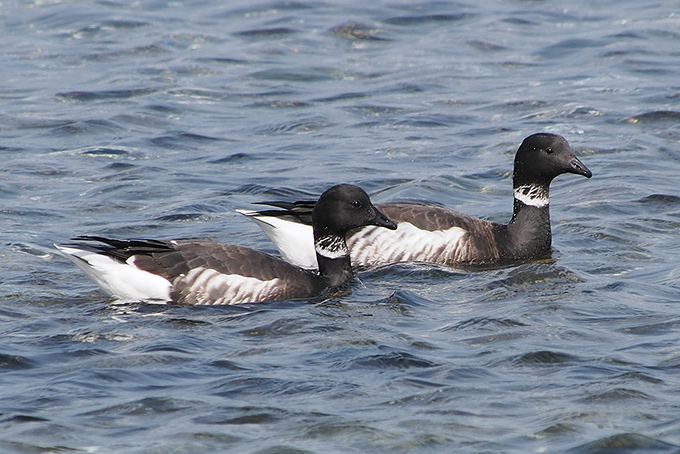
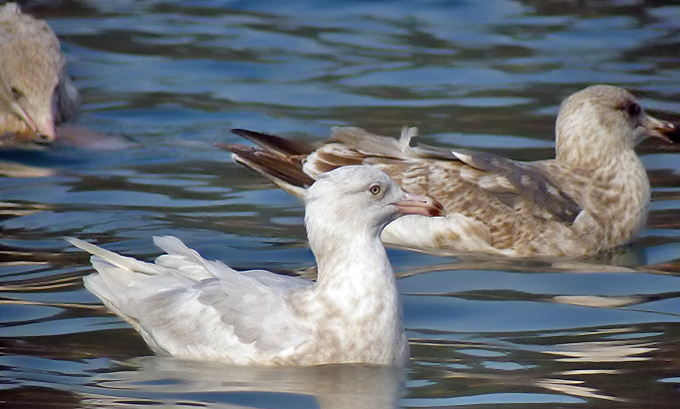
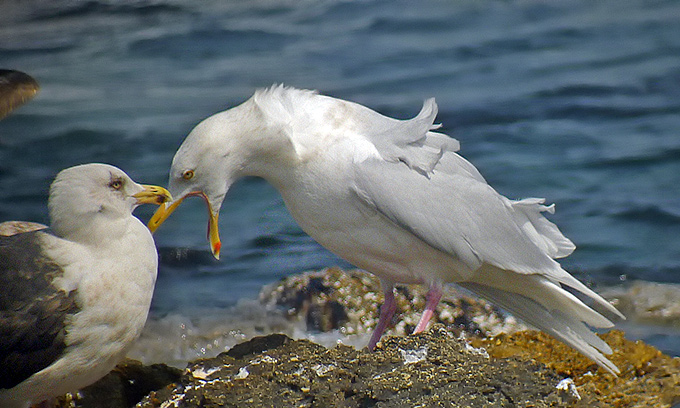
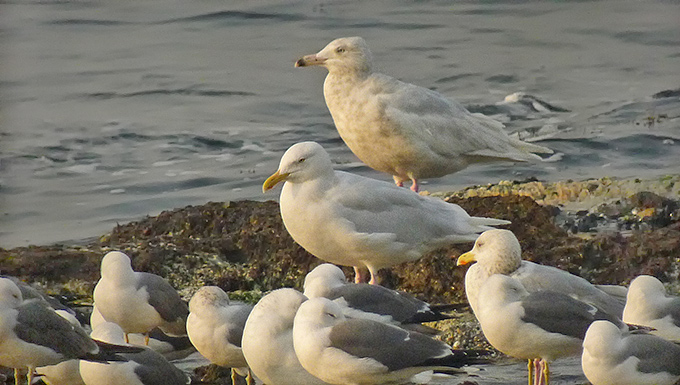
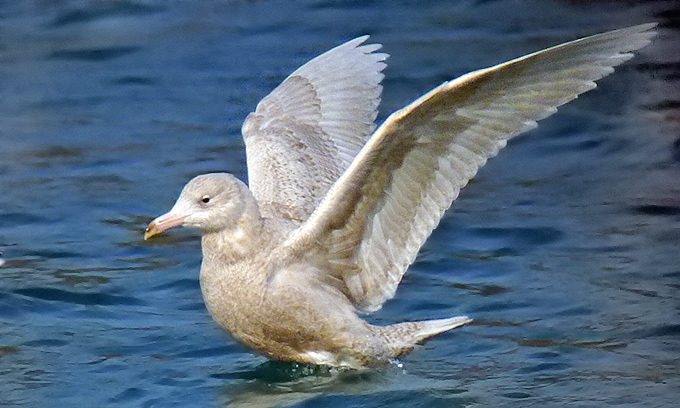

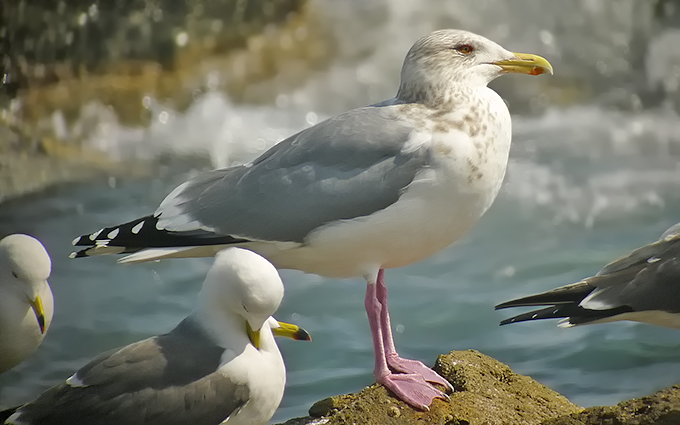
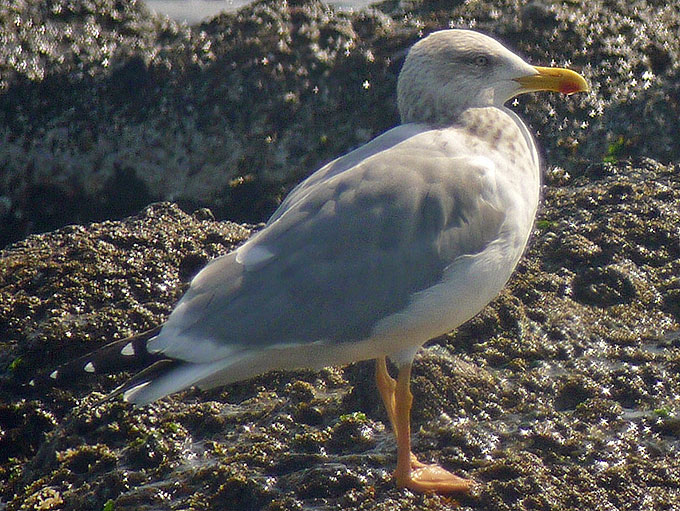
Baekryeong Island, March 7-9
Baekryeong Island, Ongjin County, Incheon, is a large offshore island lying 14km north of Socheong and at closest only 13km from the DPRK mainland. There was quite poor visibility on all three days of survey (with fog on the 7th and the morning of the 8th followed by yellow dust). Winds were light to moderate throughout and temperatures above average (with maxima of 6C on 7th, 13C on 8th and 11C on 9th) as a result of a record-breaking pulse of warm air pushing across eastern China and southern ROK (max. of 25C apparently recorded in Daegu on 11th).
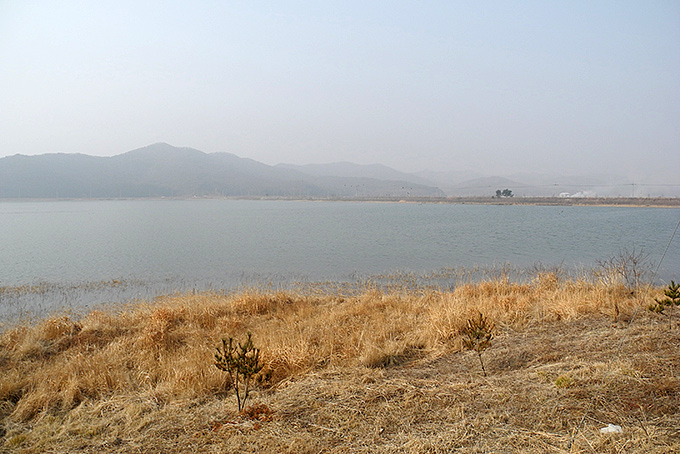
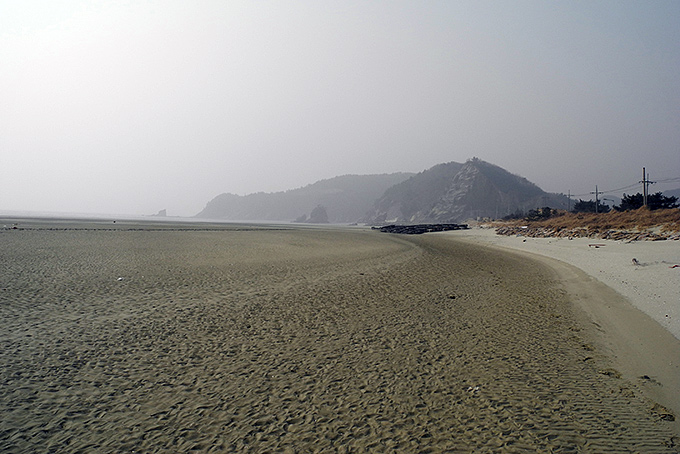
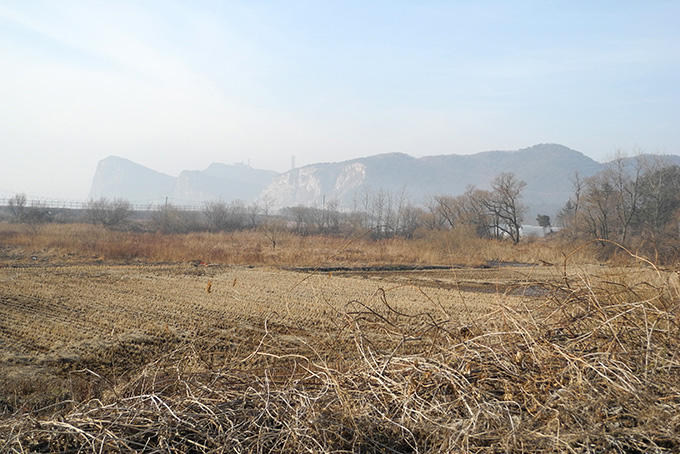
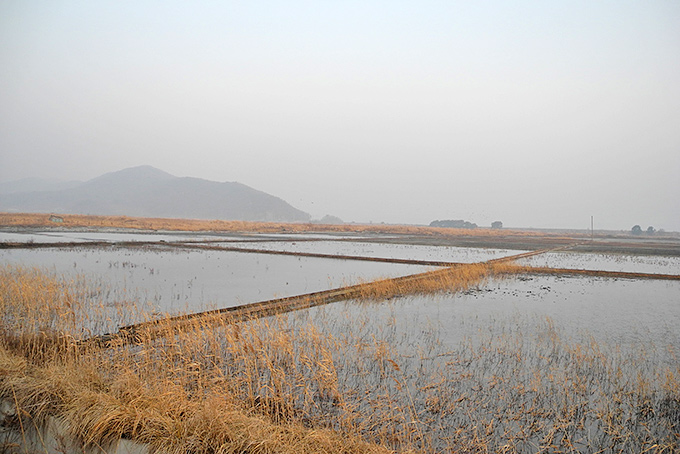
All birds (seen and heard, irrespective of distance) were counted on foot in 15 coarsely-delineated areas during 23 hours of survey between dawn and dusk. The first afternoon (marked by yellow dots) was spent in the east of the island; day two (marked in green) in rice-field areas, as far west as Hyeonhwa Ri; and day three (marked in blue) was focused on open habitats and forest edge towards the southwest of the island. As elsewhere, this kind of survey is strongly biased towards the recording of species which are vocal and/or typically found in open habitats.
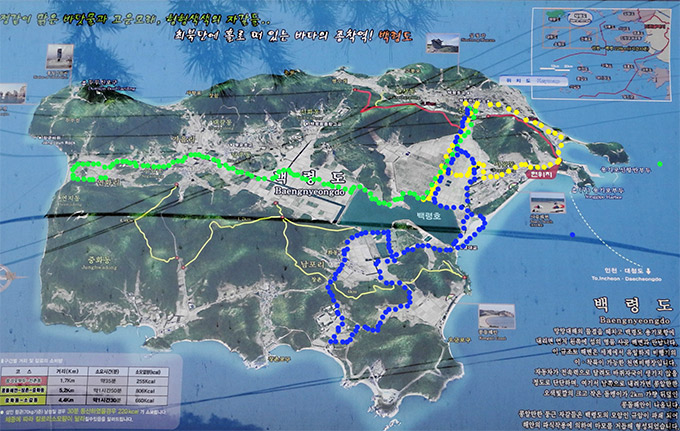
A total of 84 species were logged (none of which were owls, despite several hours spent walking in the dark). Several of the species that were recorded appear to be early spring migrants (based on research on other islands), with sudden warming on the 8th and clearing fog apparently soon followed by larger numbers of several species (including both species of rosefinch). However, as the island is not covered by the MOE winter census and is rarely visited by Birds Koreans it is also possible that many of the same species (and individuals…) also overwintered here.
The most numerous species recorded this trip was Tundra Bean Goose (with >1000 present), with the five most numerous landbird species Rustic Bunting (155 in 9 areas), Eastern Great Tit (101 in 13 areas), Yellow-throated Bunting (72 in 12 areas), Rook (85 in one flock), and Pallas’s Reed Bunting (70 in six areas).
Further selected highlights included:
Japanese Quail: One on 7th.
Mandarin Duck: One male on Baekryeong Lake (a large reclamation lake in the centre of the island visited on all three dates) on 8th.
Falcated Duck: At least 10 on Baekryeong Lake on all three dates.
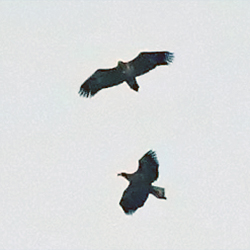
Mallard x Eastern Spot-billed Duck hybrid: One poorly digiscoped on 7th appeared to be paired with a pure Eastern Spotbill.
Baikal Teal: One male on Baekryeong Lake on 8th.
Black Kite: Two at Sagot Ri on 7th and one (still largely in juvenile-type plumage) in rice-fields west of Jincheon on 9th. This species is absent from almost all of the ROK with the exception of the far southeast and was not listed for the adjacent Hwanghaenam Province (DPRK) by Tomek, but was also recorded here in December 2007 by Robin Newlin (see Bird News archive).
White-tailed Eagle: At least five or six present, most close to Baekryeong Lake.
Steller’s Sea Eagle: An immature was soaring with White-tailed Eagles at Hwadong Ri on March 9th.
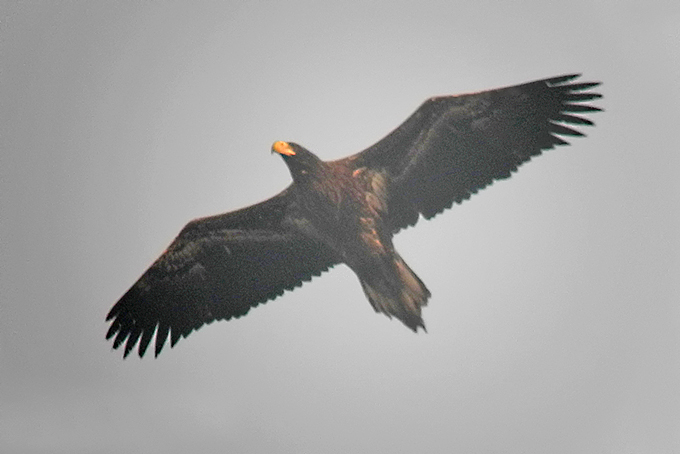
Upland Buzzard: Although this has been a rather poor winter for the species on the mainland probably six were recorded in total, with three or four First-winters and two or three adults. It is possible that several of these were early spring migrants as March appears to be the peak month for northward migration along the west coast.
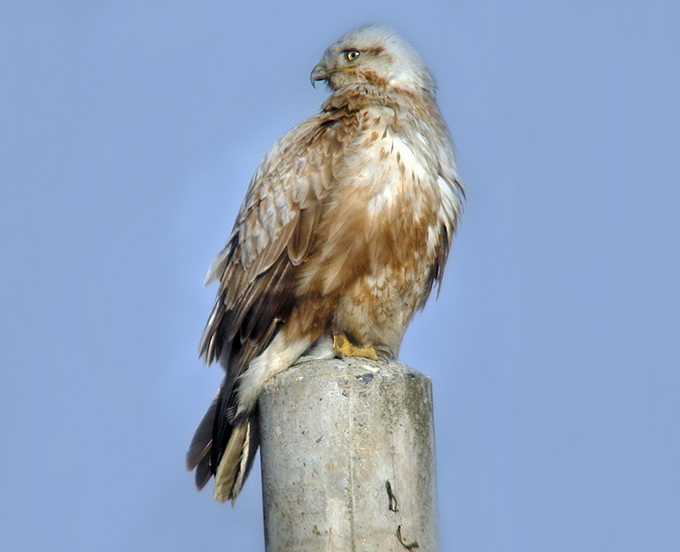
Eastern Buzzard: A total of 21 were counted in 11 areas, including one odd-looking individual at Hwadong Ri on the 9th with a warm-toned breast, solid looking dark belly, and obvious large white patches on the primary bases.
“Far Eastern Oystercatcher”: Six were display-flighting together over the salt-pans at Hwadong Ri on 9th suggesting the possibility of local breeding.
Little Ringed Plover: Singles on 7th and 8th were the personal first of the year.
Spotted Redshank: One on 8th was the personal first of the year.
Eurasian Hoopoe: One on 7th and a second on 8th were the only ones recorded.
Chinese Grey Shrike: One was in song in rice-fields east of Baekryeong Lake on all three dates and a second was at Kaul-Ri on 8th.
Azure-winged Magpie: Five were in Sagot Ri on 7th. This is my first encounter with this species on any offshore island. Of note, however, Park Jin Young’s 2002 thesis includes a series of records of the species on Baekryeong, including a maximum of 60 in September 1991.

Horned Lark: An extremely elusive individual was seen and heard twice in flight in two hours mixed in with a group of 15 or so Eurasian Skylark in Hyeonhwa Ri (in the far west of the island). In bright light, the strong yellow wash on much of the head indicated subspecies flava. No images or sound recordings were made. This is likely a much-overlooked species in the ROK, as there have now been several recent records – all along the west coast in months Oct-Apr.
Light-vented Bulbul: Two were in Sagot Ri on 7th and another probable was heard on 8th in the west of the island. With mid-winter records in previous years also from e.g. Socheong and Ganghwa it seems that this species is able to survive some of the nation’s harshest winter weather…
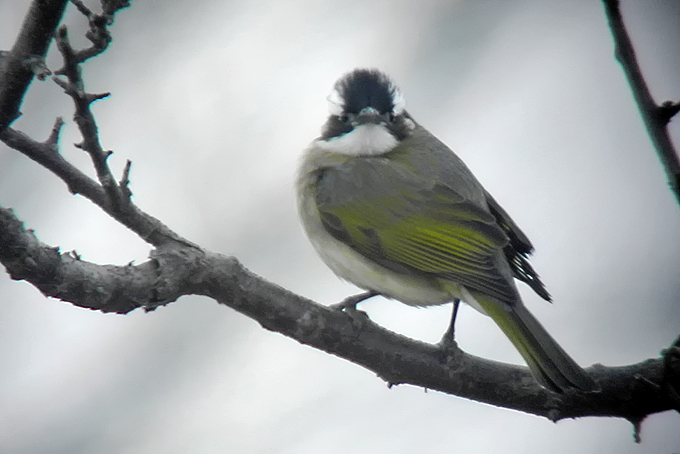
White Wagtail: A total of 20 were recorded in 11 areas, with all birds seen leucopsis (an early spring migrant and summer visitor to the ROK).
Eurasian Bullfinch: Seven were heard in three areas.
Long-tailed Rosefinch: A total of 18 were logged in eight areas.
Pallas’s Rosefinch: None on 7th; only one high-flying bird on 8th; but at least 30 on 9th (including several fully adult males).
Chestnut-eared Bunting: Three were in the main stream at Hyeonhwa Ri on 8th.
Common Reed Bunting: Probably 15 or so were present in overgrown fields to the east of Baekryeong Lake Bill size and shape suggest (as expected) subspecies pyrrhulina, said to breed in Kamchatka, Eastern Siberia, north-eastern China and northern Japan, and to winter more widely in East Asia (including in the ROK, where it appears to be increasing rapidly).
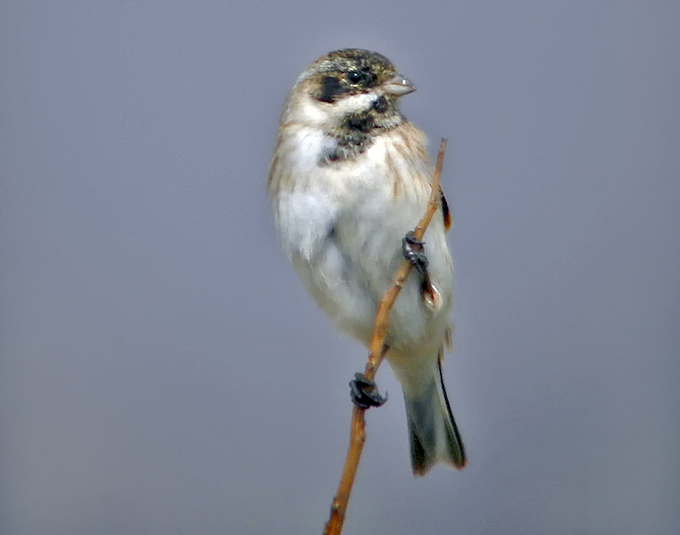
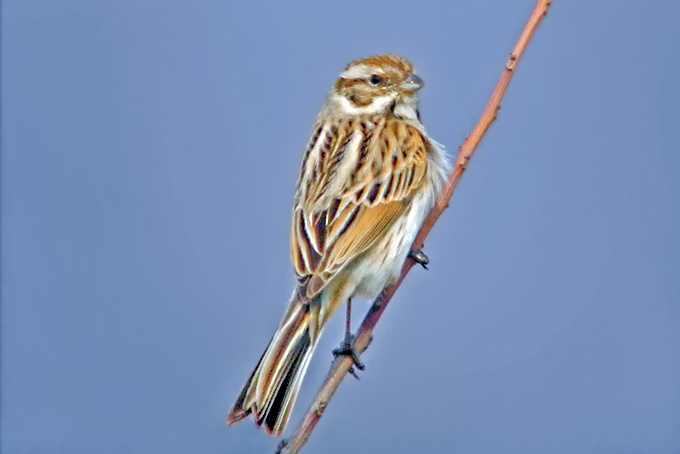
To conclude, despite the patchily heavy-construction much excellent and quite diverse habitat remains on Baekryeong. The walking is easy and several of the birds seem fairly approachable. It is therefore likely that in the right conditions and at the right times of year birding on Baekryeong could be superbly informative and hugely enjoyable. Moreover, in spite of all the televised belligerence and anger-mongering of recent weeks (similar to several recent Marches), local people seemed relaxed and extremely friendly. Here is hoping that things long remain that way!
Mokpo Namhang Urban Wetland, March 9
As preparation for the upcoming shorebird migration it was time for a longer visit to the site. The early afternoon was very warm with temperatures over 20°C but had a strong wind.
Over the winter the site has undergone quite some changes. In the natural tidal-flat we call P1 (see http://www.birdskorea.org/Habitats/Wetlands/Mokpo/BK-HA-Mokpo.shtml for more information) now much more fishing boats than before are anchored and also more platforms exists, one very big one roped to the railing along the road, where in about 3 weeks shorebirds have to look for food. In one corner the vegetation was burned down. The wall enclosed area P2 was largely filled with water, so obviously most of the infilling from 2 years ago had been removed again. The area P3 was only holding a small amount of water on one side, because on the opposite site construction work is underway. In the reed-bed area P4 the part which was dredged last year is still a huge open area and scar to the site.
All areas had plenty of birds. In P1 c. 50 Great Cormorant, Eurasian Teal, Eastern Spot-billed Duck and Eurasian Widgeon with about the same number, a few Mallard were seen in water and on platforms as well as 2 Little Grebe.
In P2 c. 200 Eastern Spot-billed Duck, c. 30 Eurasian Teal, a small flock of 28 Black-headed Gulls and a mixed flock of c. 300 individuals of Black-headed Gull and Vega Gull. In the cleaning pool of the water recycling plant a hand full more Eurasian Teal and ca. 100 Black-headed Gull. In the pine trees beside some Grey-capped Greenfinch, Brown-eared Bulbul and one Eurasian Jay was seen. The count numbers are not exact, because there was constant movement between the areas due to disturbance by people but also one small raptor patrolling and one time seen very close attacking a “jump-starting” teal.
In P3 about 150 more Vega Gulls and c. 100 Common Shelduck rushing over the wet mud looking for food.
The reed bed area had ca. 50 Northern Shoveler, a few Eurasian Teal, Mallard and Eastern Spot-billed Duck were present along 3 Grey Heron and 2 Eurasian Coot. Oriental Turtle Doves, c. 20 in total first gathered in trees and then flew to a small patch in the reed, while some Eastern Great Tit were heard passing and one seen. The surprise was the short appearance of on Naumann’s Thrush.
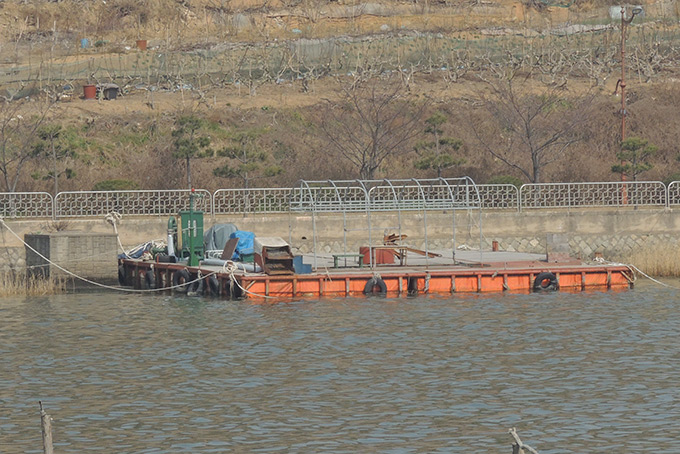


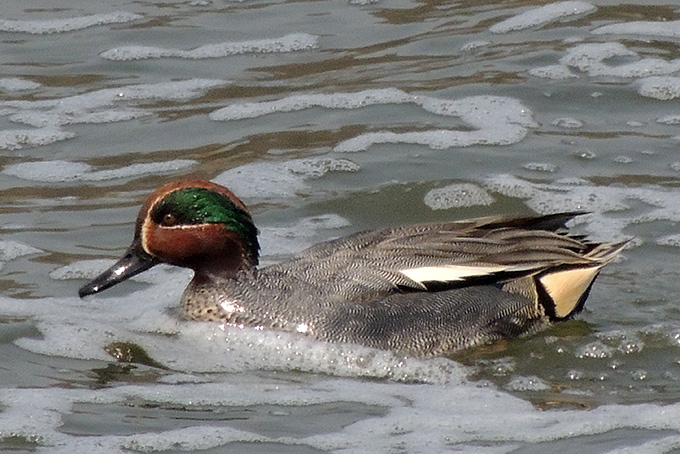
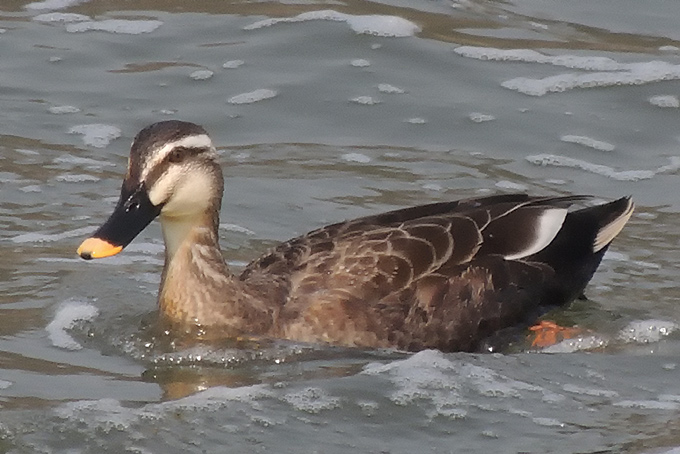
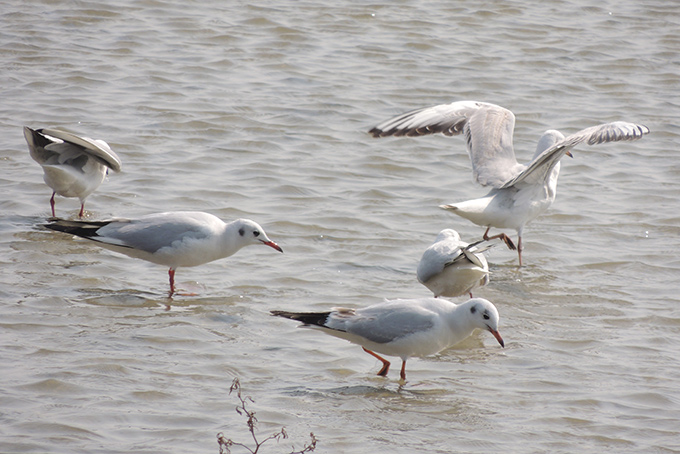

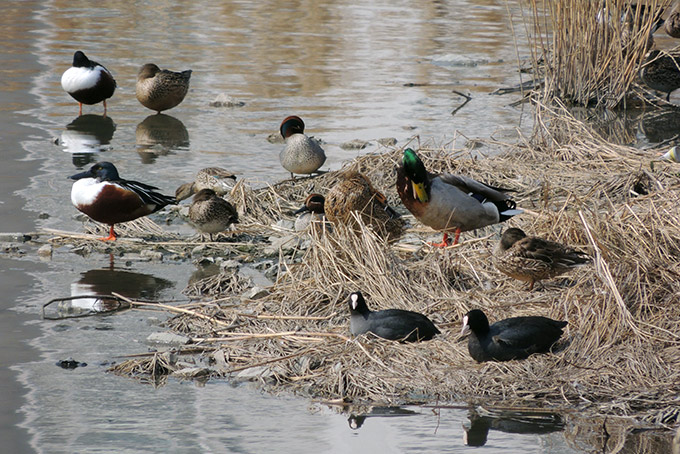
and Eurasian Coot Fulica atra, Photo © Andreas Kim
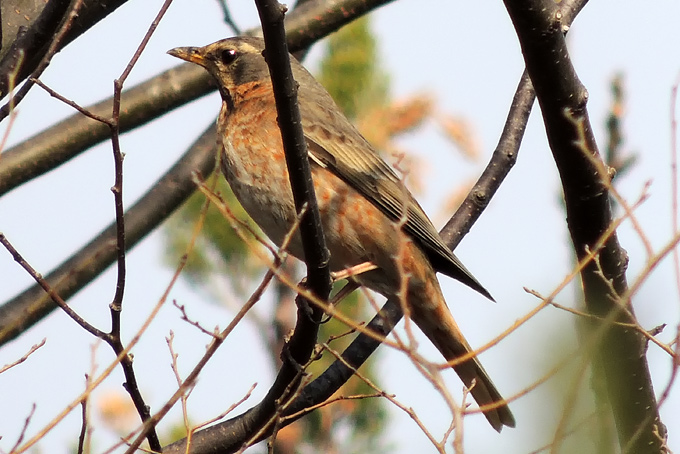
Baekryeong Do, March 8
A very elusive Horned Lark Eremophila alpestris was observed today on the western part of the island.
Usop Swamp (Naju), March 7
Like the visit 3 weeks ago small numbers of Mallard, Eurasian Teal and Eurasian Coot were seen. Most Whooper Swan had left the site and only 8 were observed, but still the c. 2000 Taiga Bean Geese were present. Unfortunately one dead individual was floating in the water. Also seen were 2 Eastern Great Egret, 4 Grey Heron, and a few Northern Shoveler.
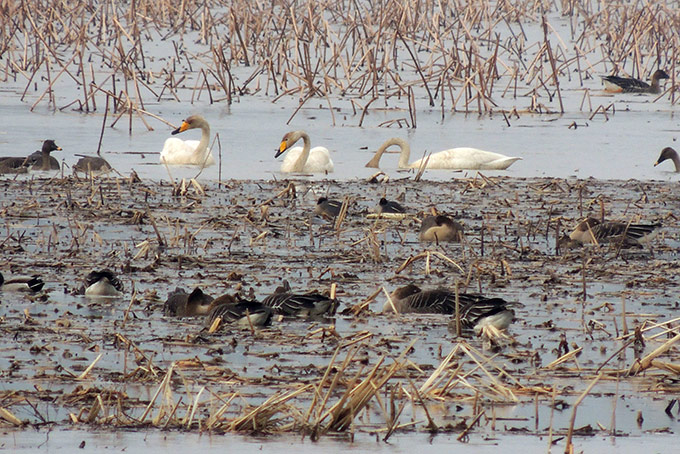
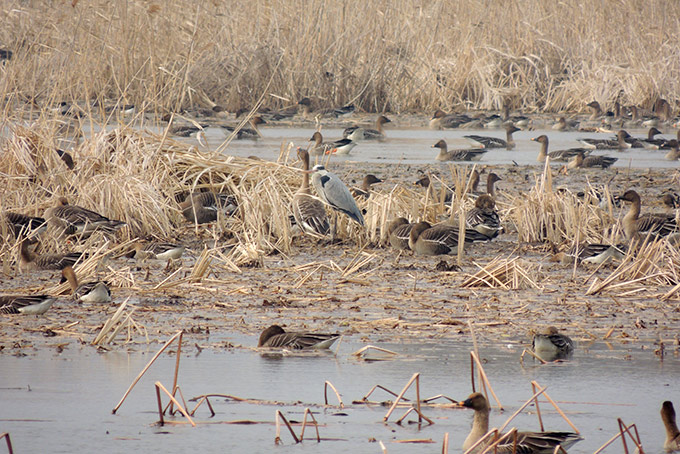
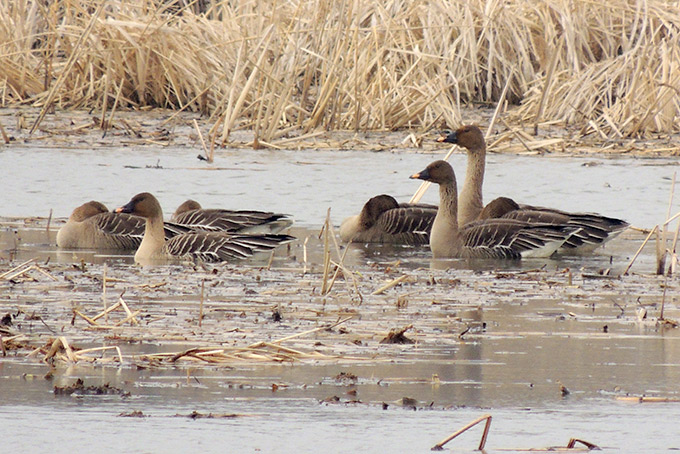
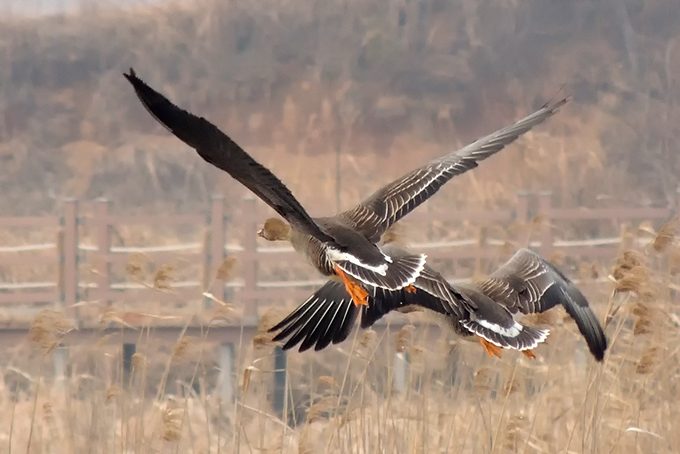
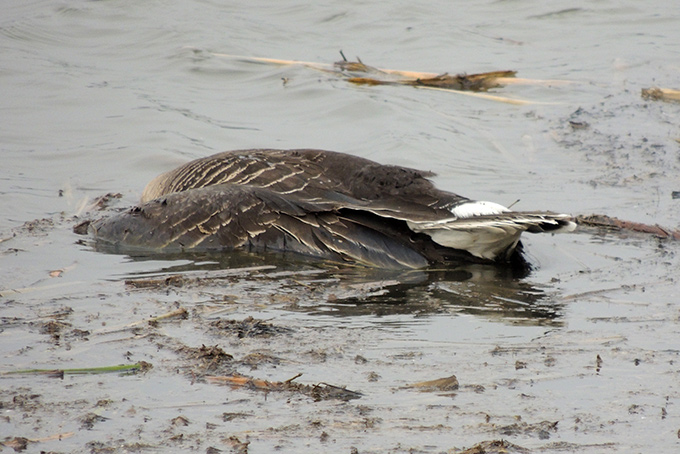
Songdo, March 3
I came back from a trip to Japan last week to find most of the ice had turned to open water and the temperatures had risen a few degrees. Together with Judit Szabo, I went to check the tidal flats on the falling tide. About 300 Saunders’s Gulls were patrolling the newly exposed mud for emerging crabs in the bright sunshine, resplendent in their newly-acquired breeding plumage, calling and even displaying occasionally. A fantastic sight! The wintering flock of Eurasian Curlews was still present and numbered 700, together with 45 Grey Plover and 20 Dunlin. Three Relict Gulls were with them but sadly not yet in breeding plumage. About 50 Black-headed Gulls also still retained their winter plumage. Recently-arrived Eastern Oystercatchers were very active, piping and displaying on the mudflats: there must have been 40-50 scattered throughout the area. A White-tailed Eagle flew over, putting up large flocks of ducks, mostly Mallards and Eastern Spotbill Ducks. Two Large-billed Crows were being hassled by the local Magpies. One or two Grey Herons were also present, but no sign of the Great Egret seen a couple of weeks ago. On the other side of the new reclamation, about 2,000 large gulls rested on the remaining ice, mostly Mongolian and Vega gulls, but one or two darker-mantled birds and a couple of hulking Slaty-backed Gulls. 5 Red-breasted Mergansers and 50 Common Shelducks were on the water.
On the island in Namdong Reservoir, the Mongolian Gulls are already displaying and scraping. A few Great Cormorants have also arrived back, but no Black-faced Spoonbills as yet, although I’m sure they are on their way as numbers are going down at Mai Po in Hong Kong.
At the Incheon old golf course, Long-tailed Rosefinches were in evidence with about 20 birds. A single Pallas’s Rosefinch was also present. Other birds included Peregrine (a smart adult), Eastern Buzzard, Eurasian Jay, 3 Yellow-throated Buntings, Great-Spotted Woodpecker and a couple of vocal Marsh Tits.
Olympic Park, March 3
Spring has sprung and the air is warming. Brown-eared Bulbuls are wolfing down the berries, but the winter birds have all gone!
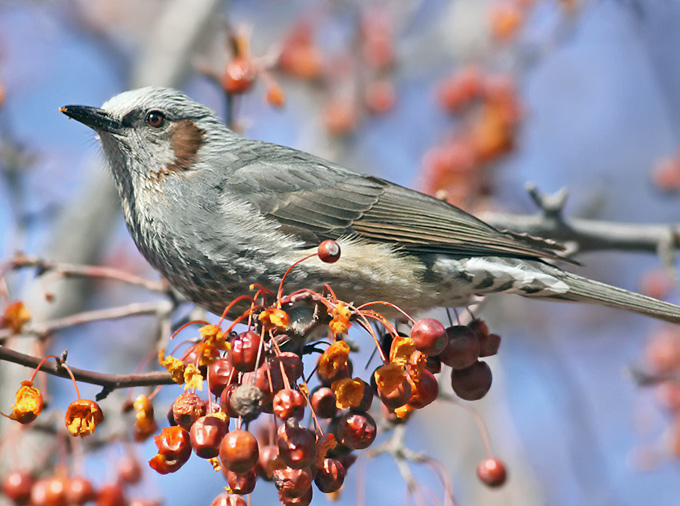
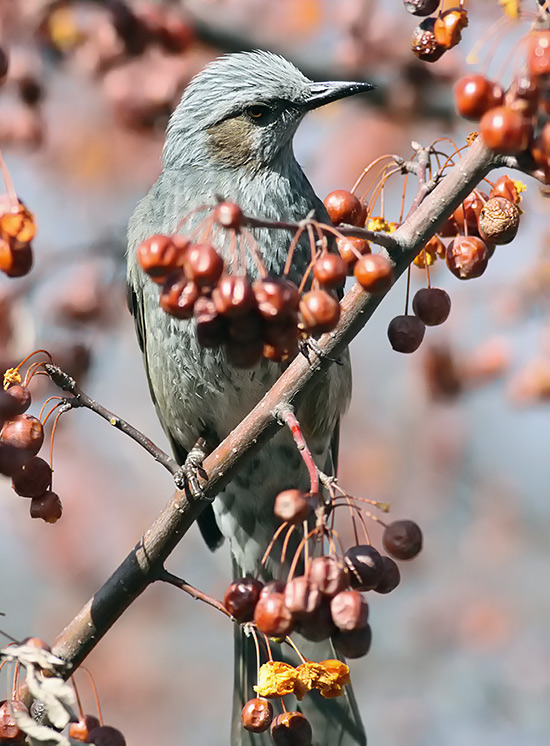
Ulseuk Do and Dajeo Eco Park, March 2
At Nakdong Estuary, most of the same species were observed as were on the 1st of March (see here), but in addition were 3 Steller’s Sea Eagles, 2 White-tailed Sea Eagles, and a noteworthy group of 7 Naumann’s Thrush.
At the newly constructed (as part of the Four Rivers Project?) Dajeo Ecological Park, natural floodplain habitat appears to have been degraded and many of the reed beds replaced with grass fields and ornamental trees. Although reeds do still remain, there are now numerous walking trails, driving trails, lights, and in some areas speakers playing radio music.
Birds observed include 6 Japanese Quail, one hundred plus Common and Pallas’s Reed Buntings, several Little Buntings mixed with Rustic Bunting, Buff-bellied Pipit, and several Dusky Thrush. Most notable was a Long-tailed Shrike observed in a small patch of natural habitat, but surrounded by dirt piles and heavy machinery.
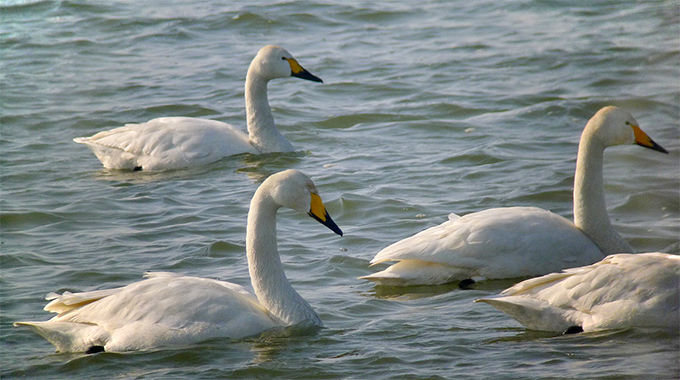
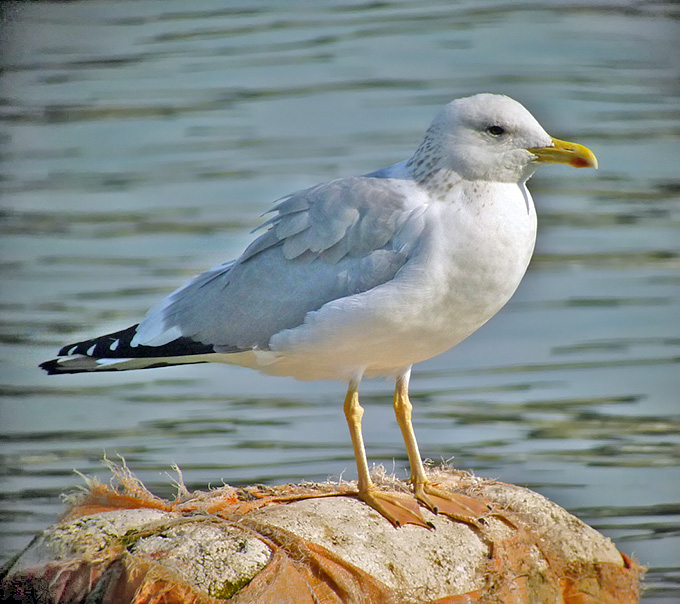
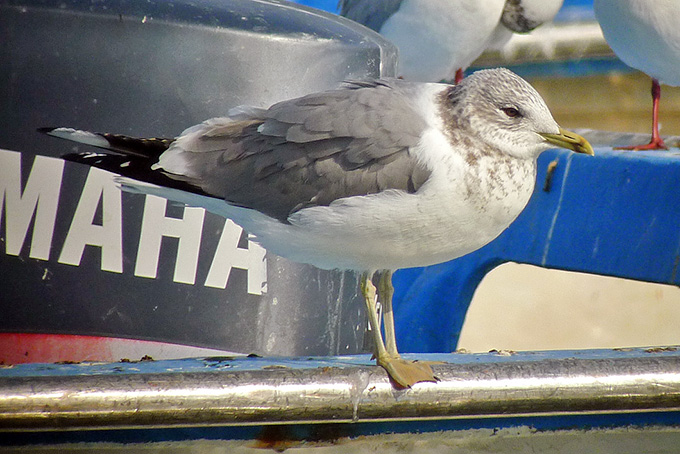
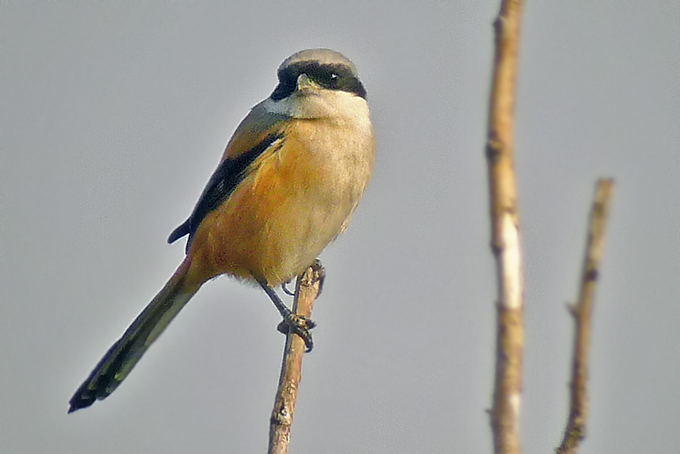
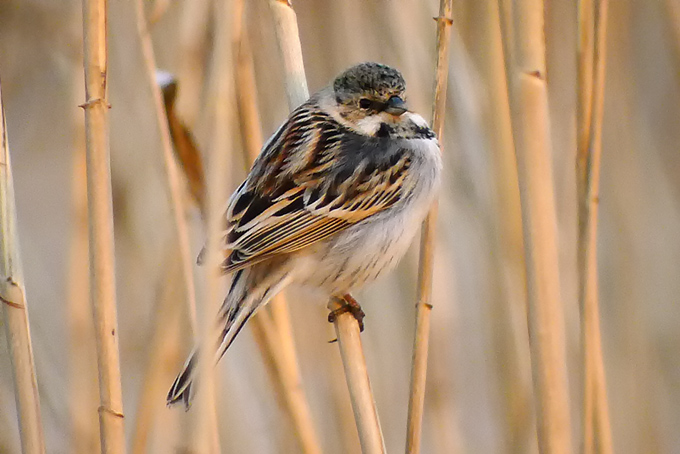
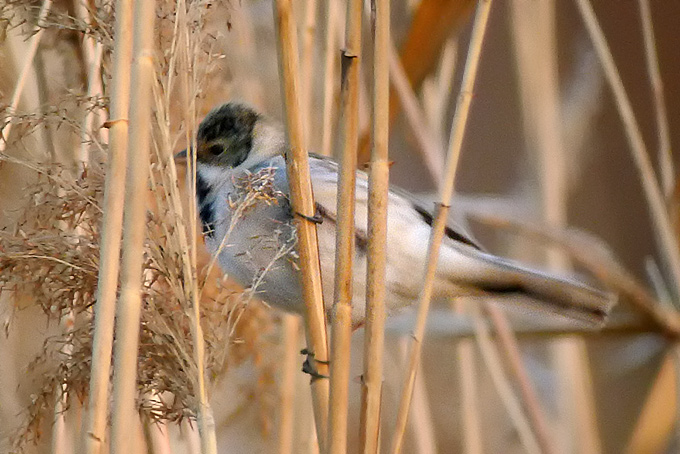
Junam Reservoir and Ulseuk Do, March 1
With a spring-like rain and a cool not cold morning, we started our day of birding with a quick stop at a small park near Igidae. There we had really great views of Olive-backed Pipit, a gorgeous Siberian Accentor, but no sign of the previously seen Hoopoe.
We headed to Junam. It was relatively quiet. The morning rain had stopped and there were not large numbers of birds. On the lake were some Smew, Mallard, Northern Shoveler, Northern Pintail, Eurasian Teal, a few groups of Pochard mixed with Greater Scaup, Tufted Duck, but than no sign of any hoped for first for the winter Baer’s.
Opposite the pumping station were a large flock of White-fronted Geese, with one plus Lesser White-fronteds along with one or more possible hybrids. No cranes were found close the reservoir, but 5 White-naped Crane were spotted on some nearby rice fields. Other birds of note were Northern Lapwing, 2 White-tailed Eagle, 1 Eurasian Sparrowhawk, an Eastern Buzzard perching next to a rather large looking Northern Goshawk, both overlooking a small flock Taiga Bean Geese.
At Dongpan we had great views of a gorgeous Naumann’s Thrush, many Dusky Thrush, Grey-headed Green Woodpecker, some White-cheeked Starling. Prize to the best looking birds of the day go to about 5 stunning rosacea Bullfinches.
On our way to Nakdong Estuary, we made a short detour to Hwapo Reservoir for quick scan through about 2,000 Greater White-fronted Geese. Unfortunately, no Lessers. 5 Cinereous Vultures were seen soaring in the sky.
At Myeongji, several Common Shelduck spread about the tidal area, Widgeon, some Greater Scaup, Black-tailed Gull, Black-headed Gull, a few sharp looking Mongolian Gull, some ragged looking Vega Gull, Common Gull, Heuglin’s Gull, Eurasian Curlew, and Osprey.
At Nakdong Estuary, Red-breasted Merganser, Eurasian Teal, Northern Pintail, Spot-billed Duck, Mallard, Northern Lapwing, many Whooper Swans, one Tundra Swan, Black Kite, Eastern Buzzard, Eurasian Sparrowhawk, Dusky Thrush, Little Bunting, Black-faced Bunting, and most interesting c. 100 Common Reed Buntings taking flight at sunset with Yellow-throated Bunting and Pallas’s Reed Bunting mixed in. No sign of any of the Avocets previously reported at Nakdong a few weeks before.
And of note: On February 25th, at Nakdong Estuary, more than 30 Japanese White-eyes and a few Penduline Tits were observed feeding in the reeds in the late afternoon.
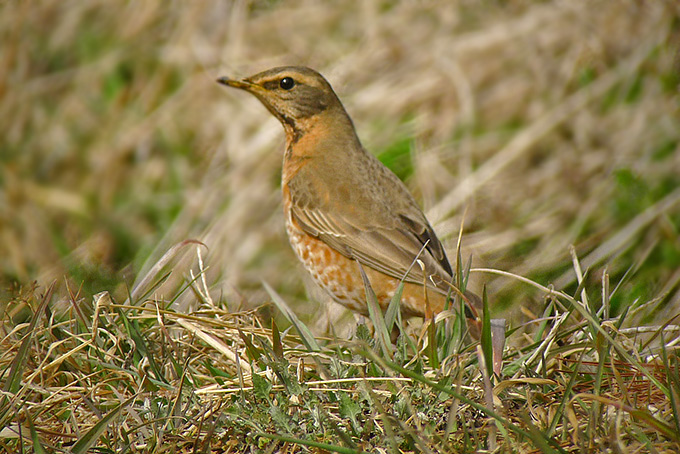
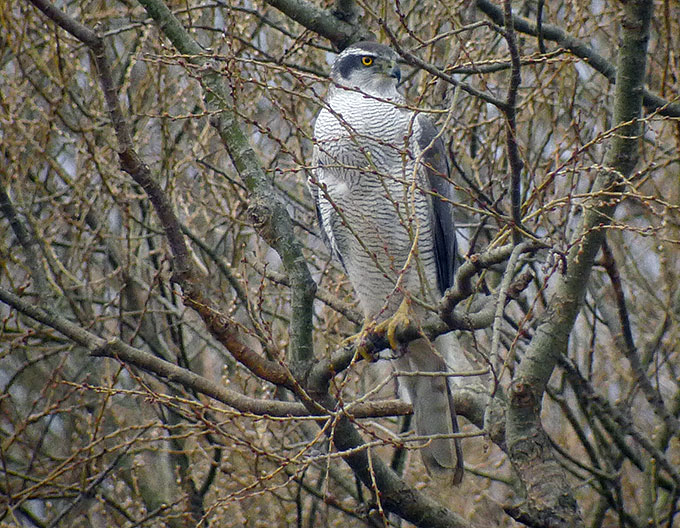
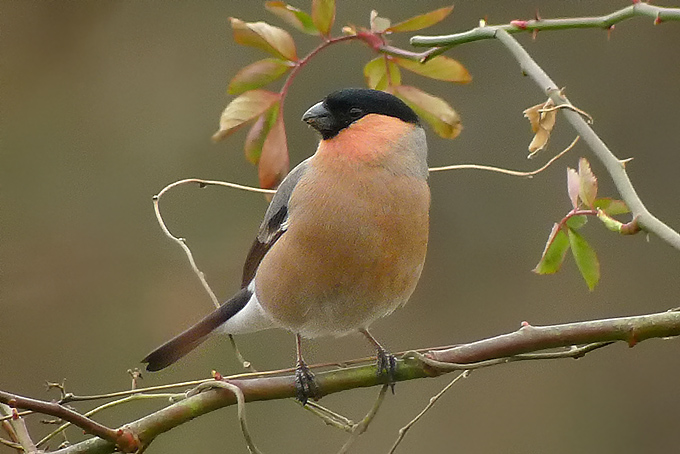
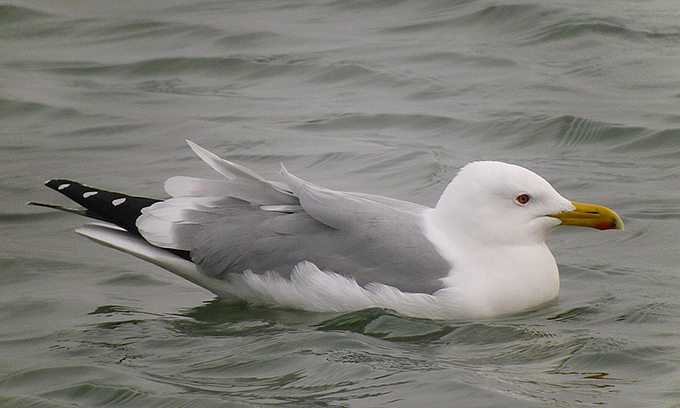
Birds Korea 1108 Ho, 3 Dong, Samick Tower Apt., 148-22, Namcheon-Dong, Su-Young-Gu
Busan, 618-762 Republic of Korea





